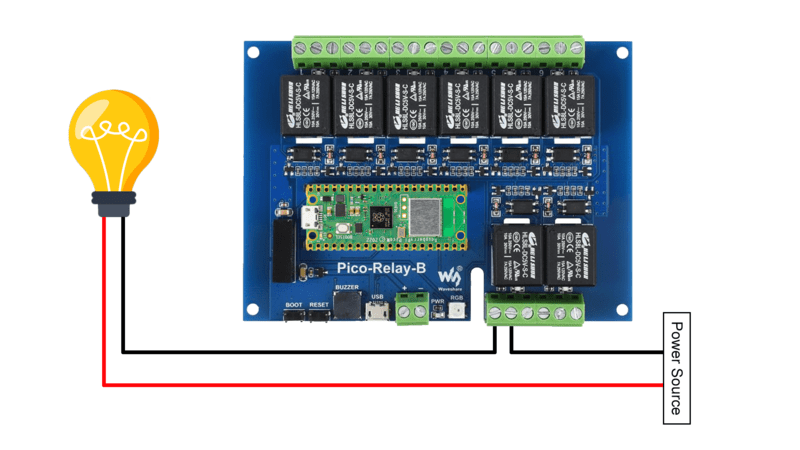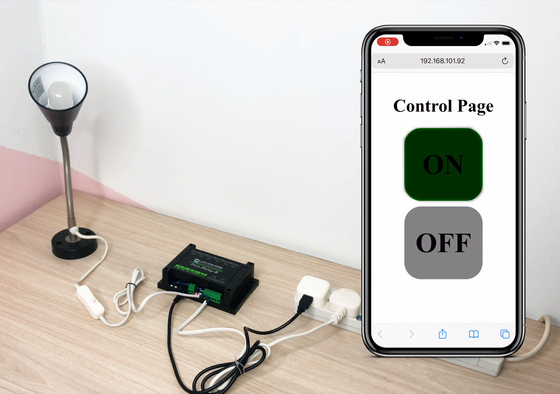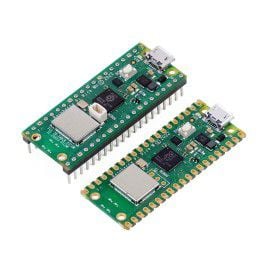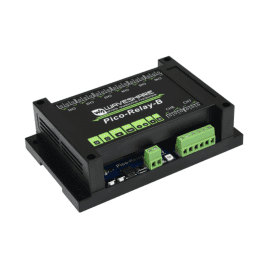Your shopping cart is empty!

Unlocking Industrial Potential: Web-Controlled Light Bulbs with Pi Pico W & 8-Channel Relay
- Abdulrahman Alhamed
- 15 Aug 2023
- Tutorial
- Intermediate
- 1797
Introduction
In the world of technology, the Raspberry Pi Pico W has made its mark as a versatile microcontroller. While it's known for hobbyist projects, its potential extends to industrial applications as well. This tutorial aims to bridge these two worlds by demonstrating how you can use the Pi Pico W and an 8-channel relay to control something simple yet impactful: a light bulb. This showcases the Pi Pico's capabilities and highlights how it can serve as an efficient and cost-effective solution for industrial-like tasks.
The Merge of Technology and Industry
Industries have long relied on Programmable Logic Controllers (PLCs) to manage various processes and machines. These devices are programmed to automate tasks in fields like manufacturing and chemical processing. But things are changing. The Raspberry Pi Pico W, paired with the user-friendly CircuitPython programming language, is an example of this change. While PLCs are still dominant in industry, the Pi Pico W offers an alternative for specific jobs. It combines microcontroller programming with the ease of Python, making it a flexible solution even for industrial-like scenarios.
Project Goal
This tutorial demonstrates the potential of the Pi Pico W in tasks that mimic industrial settings. The project involves using the Pi Pico W and an 8-channel relay to control a light bulb. While it might seem simple, this project lays the foundation for understanding how the Pi Pico W can be used in more complex industrial control situations.
Hardware
Hardware Components
Video Tutorial
Connection
Warning: Before we proceed further, it's crucial to address a matter of safety. In this project, you'll be working with a high-voltage power source connected to the light bulb. High-voltage electricity can be dangerous and potentially lethal if not handled with care.
- Disconnect Power: Ensure that all power sources, including the Raspberry Pi Pico W and the relay module, are disconnected from any power source before making any connections or adjustments.
- Avoid Wet Conditions: Do not work on the project in wet or humid conditions. Water and electricity are a dangerous combination.
- Double-Check Wiring: Always double-check your wiring before applying power. A simple mistake in wiring could lead to dangerous situations.
- Supervision: If you're not experienced with working with high voltage components, consider seeking assistance from someone who is.

Get Familiar with Thonny and CircuitPython
In this tutorial, we'll use Thonny editor & CircuitPython to build the code for this project. If you're not familiar with Thonny, check out the video below to learn how to get started with it.
Code
Visit this GitHub link and download this required library, copy (adafruit_httpserver) folder, and paste it into your "lib" folder in your CIRCUITPY drive.
Project complete

This tutorial has demonstrated how the Raspberry Pi Pico W can be used to control a light bulb with an 8-channel relay, highlighting its ability to connect everyday technology with industrial-like tasks.
 International
International Singapore
Singapore Malaysia
Malaysia Thailand
Thailand Vietnam
Vietnam

